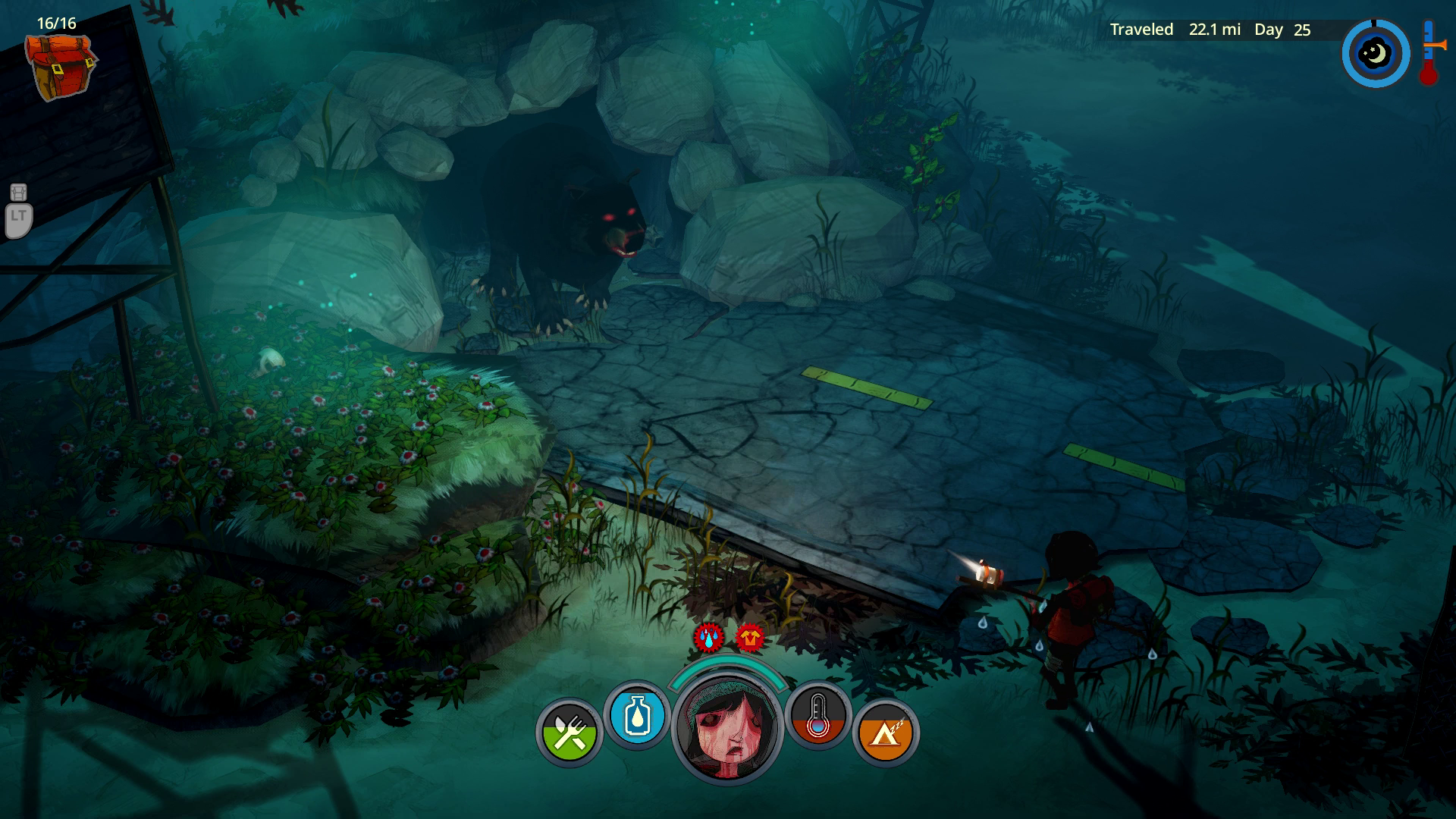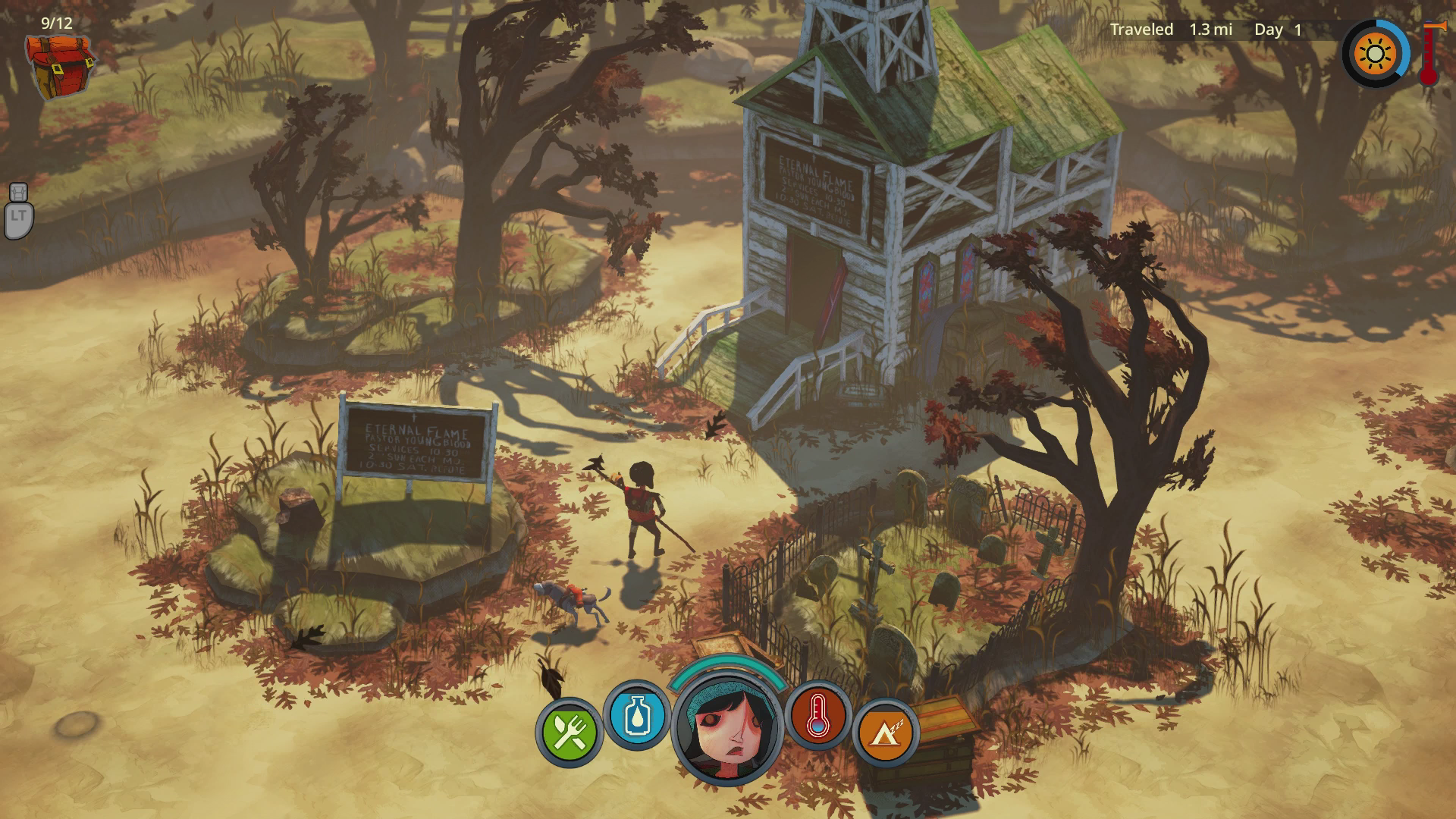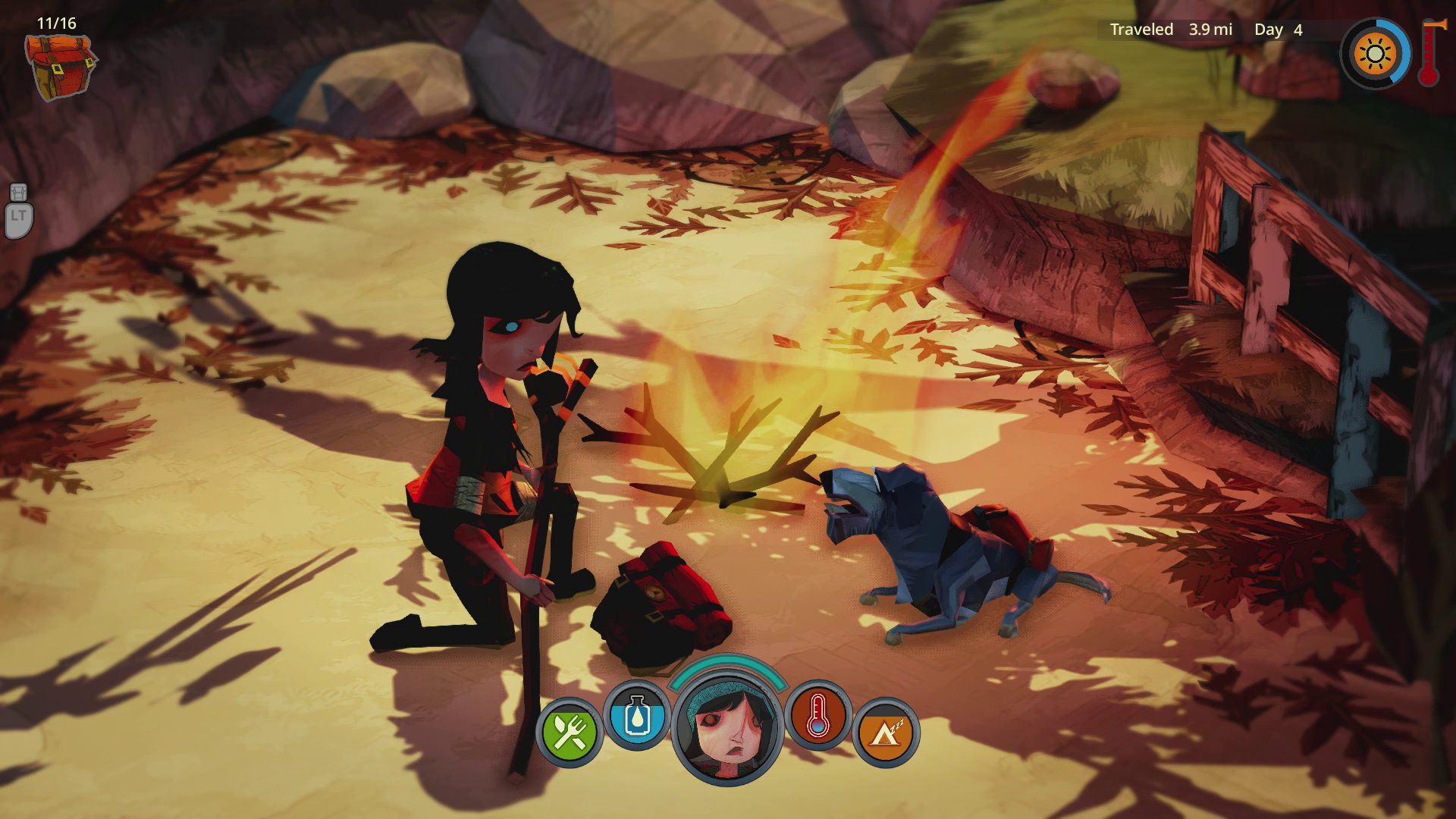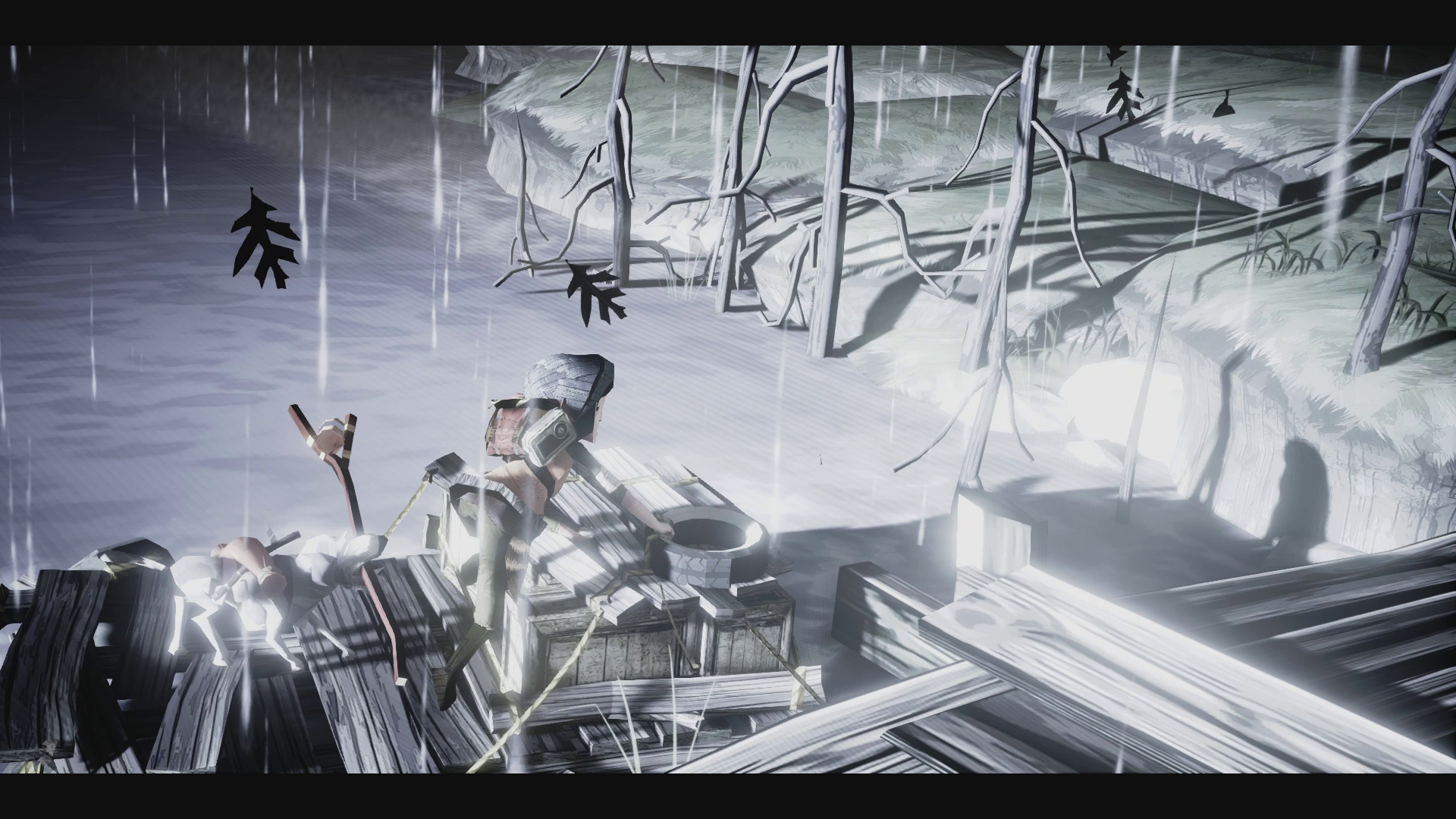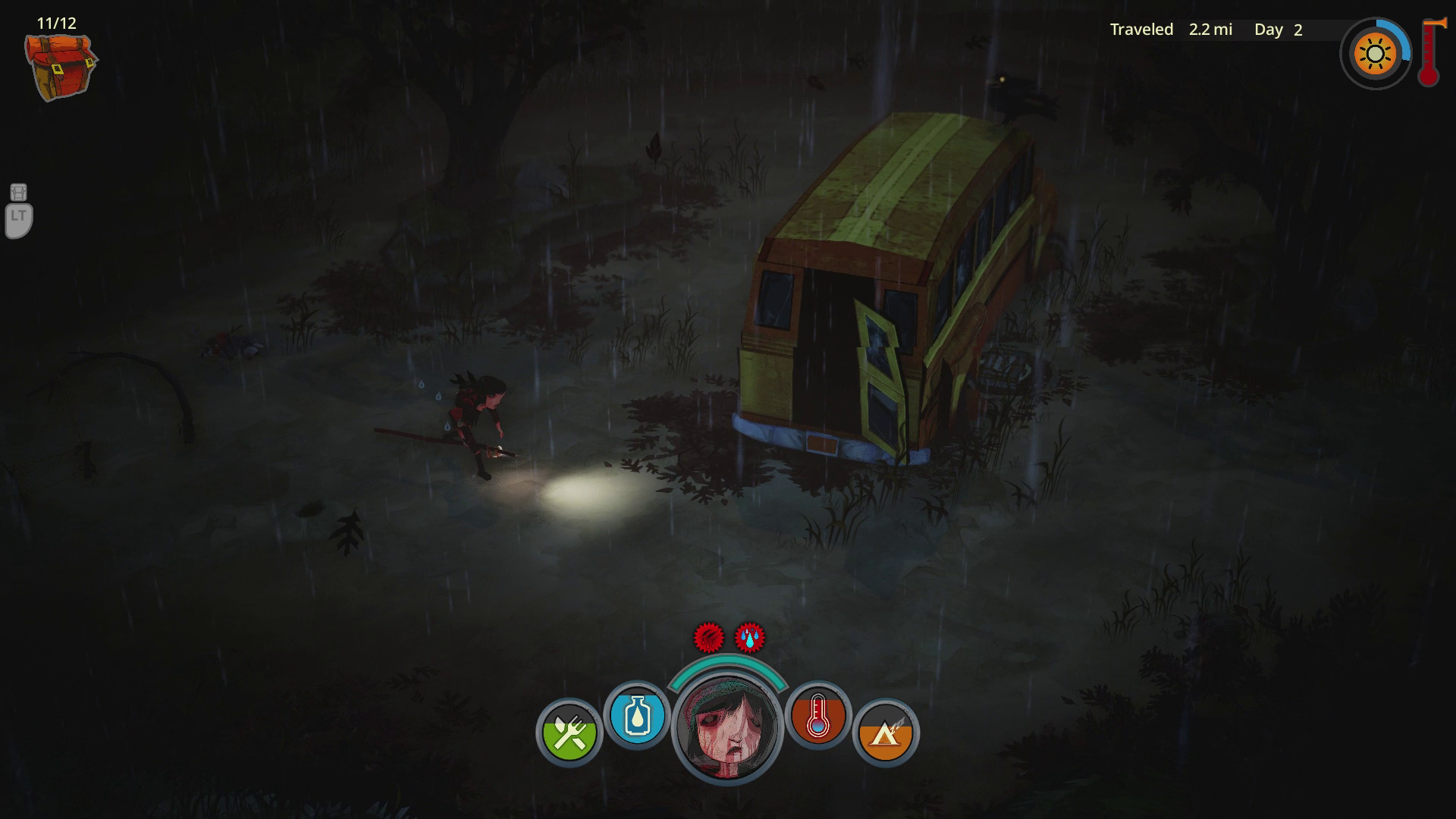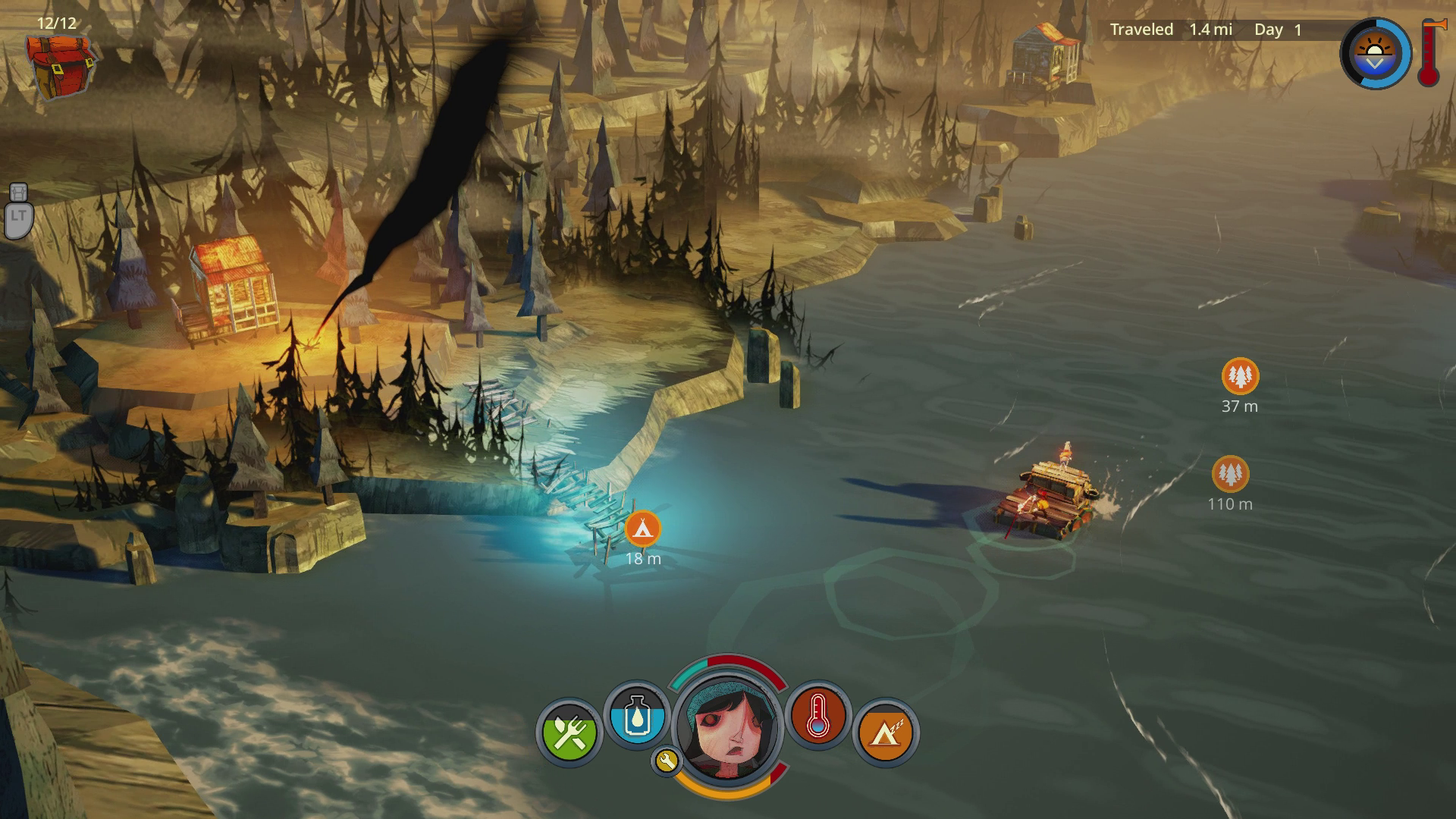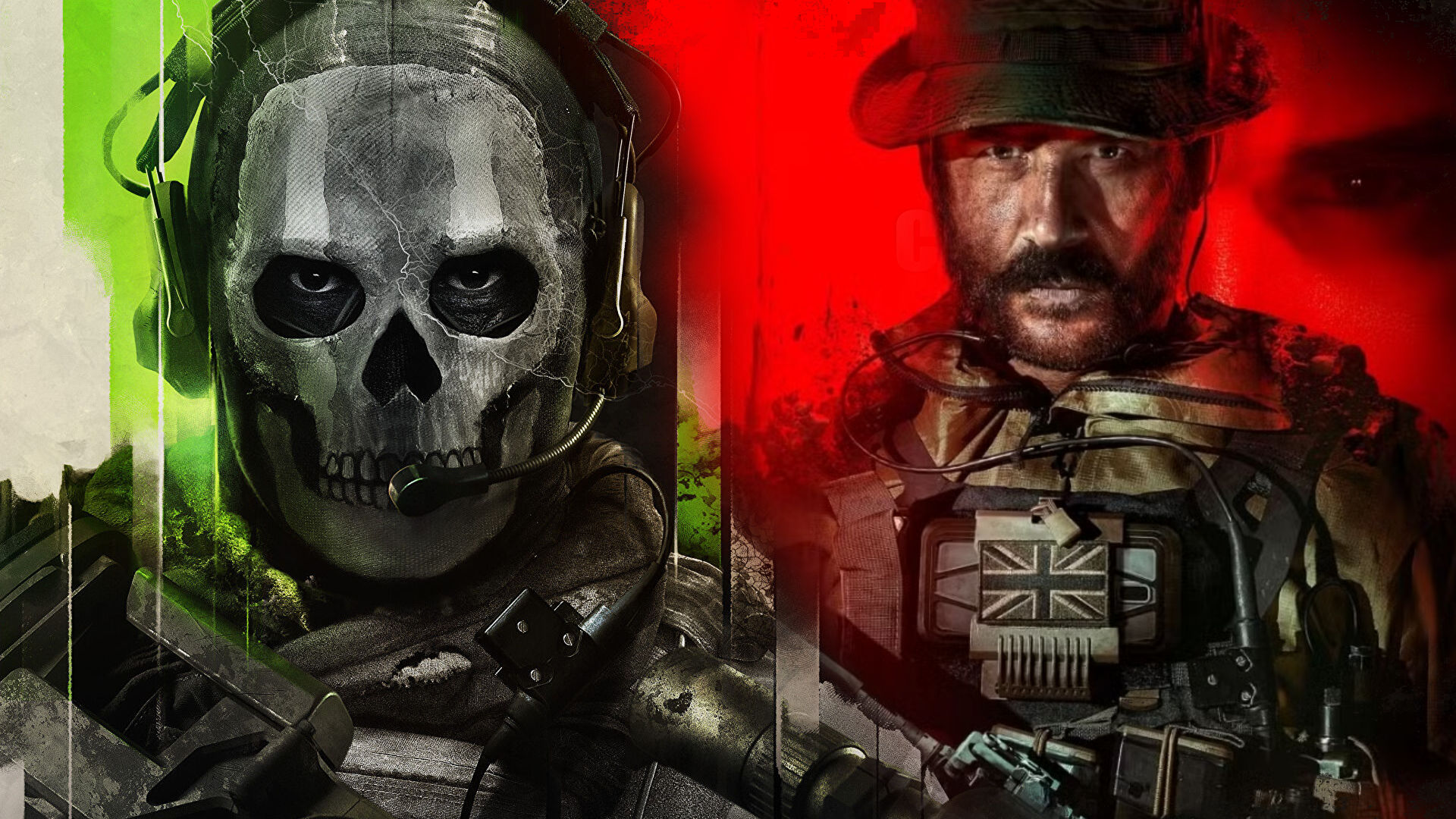
The Flame in the Flood is a post-societal survival roguelite and represents the first game from The Molasses Flood — a brand new indie outlet comprised of major industry talent. The team contributed to the likes of Halo and Bioshock, and that fact shines in every aspect of The Flame in the Flood.
It's well polished, balanced with razor-sharp precision, meticulously focused and is visually and aurally stunning. Knowing that the project began life as a $250,000 Kickstarter campaign is a little mind blowing.
Disclosure: This review was conducted on Xbox One using a copy provided by the developers.
Roguelite
What is The Flame in the Flood?
The Flame in the Flood is first and foremost a survival adventure, taking place in a vibrant post-societal America. Civilization has been wiped off the map, and you're left alone with nothing but the clothes on your back and the will to survive.
The game occupies a subgenre rising to prominence through the likes of Rogue Legacy and The Binding of Isaac. The Flame in the Flood is a roguelite, typified by randomly generated maps and perma-death or similar mechanics. A roguelite is typically regarded as a less punishing version of a roguelike, which takes their inspiration from Rogue — a classic dungeon crawler from the 80s.
In The Flame in the Flood, it's your task to guide Scout and her trusty canine companion, Aesop, on a long and dangerous journey downriver, facing every threat the feral and forgotten wilderness can throw at you.
All the latest news, reviews, and guides for Windows and Xbox diehards.
Flood fatale
Setting and Design
The Flame In The Flood's lonely world is as deadly as it is evocative.
The Flame In The Flood takes place along a procedurally generated river, laden with ruins, savage wilds, and abandoned homes. The environments draw inspiration from the Florida Everglades, Mississippi River, and Louisiana bayous drenched in local folklore and culture. The Molasses Flood even recruited acclaimed American folk singer Chuck Ragan to create a bespoke soundtrack that's so good it inspired me to pick up my guitar for the first time in two years. The Flame In The Flood's lonely world is as deadly as it is evocative.
The game's art commands almost as much attention as its unique gameplay. The Molasses Flood enlists detailed cel-shading techniques to bring The Flame In The Flood to life, forgoing shades of green and brown typical of apocalyptic games to deliver something a little more vibrant, and a little more vivid.
I feel like some games settle on comic-book style visuals to avoid the additional dev costs involved with detailed photo realism, but The Flame In The Flood feeds the technique through its twisted art style, complimenting rather than detracting. The Flame In The Flood's characters and creatures look as though they were plucked from a Picasso-inspired comic book nightmare, with unnatural angles and haunting asymmetry — intense like its gameplay.
The Flame In The Flood also features dynamic weather and stark lighting effects, further elevating its world design. Guiding my raft into its first thunder storm was exhilarating, led only by dramatic lightning flashes as I battled with the river's increasingly malicious currents. I got the sense that almost every aspect of the game's design is a deliberate, focused effort, rather than a check-list of visual features we've come to expect from modern games. The weather effects aren't just there to be pretty, they feed into The Flame In The Flood's gameplay — the world itself is trying to kill you.
While The Flame In The Flood suffered from the occasional bit of screen tearing here and the odd frame rate issue there, I didn't suffer from any crashes or game-breaking issues. The Flame In The Flood's art, design and gameplay intertwine to create something truly memorable and unique, with a level of cohesion that's becoming increasingly rare among even some of the more high profile games out there.
Fire, walk with me
Gameplay & Story
The Flame In The Flood tasks the player to manage Scout's various basic human needs — hunger, warmth, fatigue, thirst and not being mauled by a bear. As you progress, your essential health meters will gradually deplete, eventually putting Scout into a critical state, crawling on the floor. Once the brief critical period is over, Scout will die, and die you will, for The Flame In The Flood will not shy away from challenging you.
For those of us who don't enjoy the permanence of death — typical in a roguelite — The Flame In The Flood is split into two modes. The first is the game's Campaign mode, which offers (optional) frequent check points for you to return to upon death, in addition to some story elements. And then there's Endless mode, which takes you on an increasingly difficult journey down an infinitely procedurally generated river — where death means death.
The game's story mode is highly recommended for first-time players, and it's nice to see a roguelite offer a more traditional experience alongside its core offering. Unlike the Endless mode, the game's story mode will eventually come to an end, while introducing you to mysterious and quirky characters along the way. The characters add a little context to the game's setting with text-based dialogue exchanges, and occasionally present opportunities to trade. I'd have personally liked to have seen a little more meat in the game's story, but keeping it minimal does allow the gameplay to speak for itself. I get the sense that The Flame In The Flood's post-societal journey is intended to be a solitary experience.
That said, Scout isn't completely alone. The game's opening shows a dog named Aesop, taking a backpack from the remains of a less fortunate adventurer, before bringing it to Scout, who is huddled in the failing glow of a camp fire. The pair then begin their journey downriver. The first area offers tutorials on how to play, and read them you should. When you adjust to the game's somewhat cumbersome inventory management (craft pouches as soon as possible), The Flame In The Flood isn't overly complex. The controls are intuitive, it sports a polished and informative UI and features fairly simple mechanics — but being ignorant of some of the game's finer details can kill you, as I would discover.
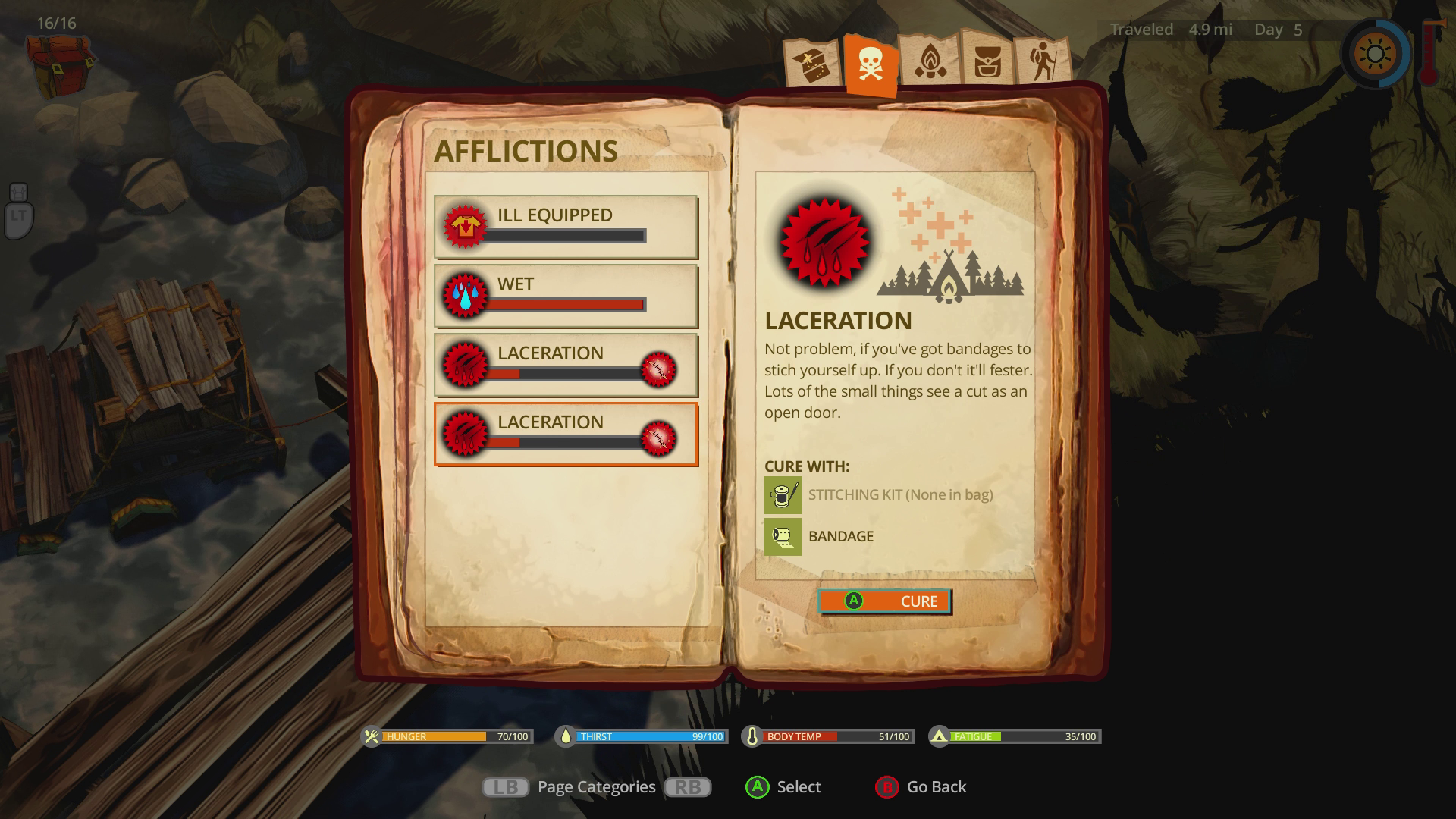
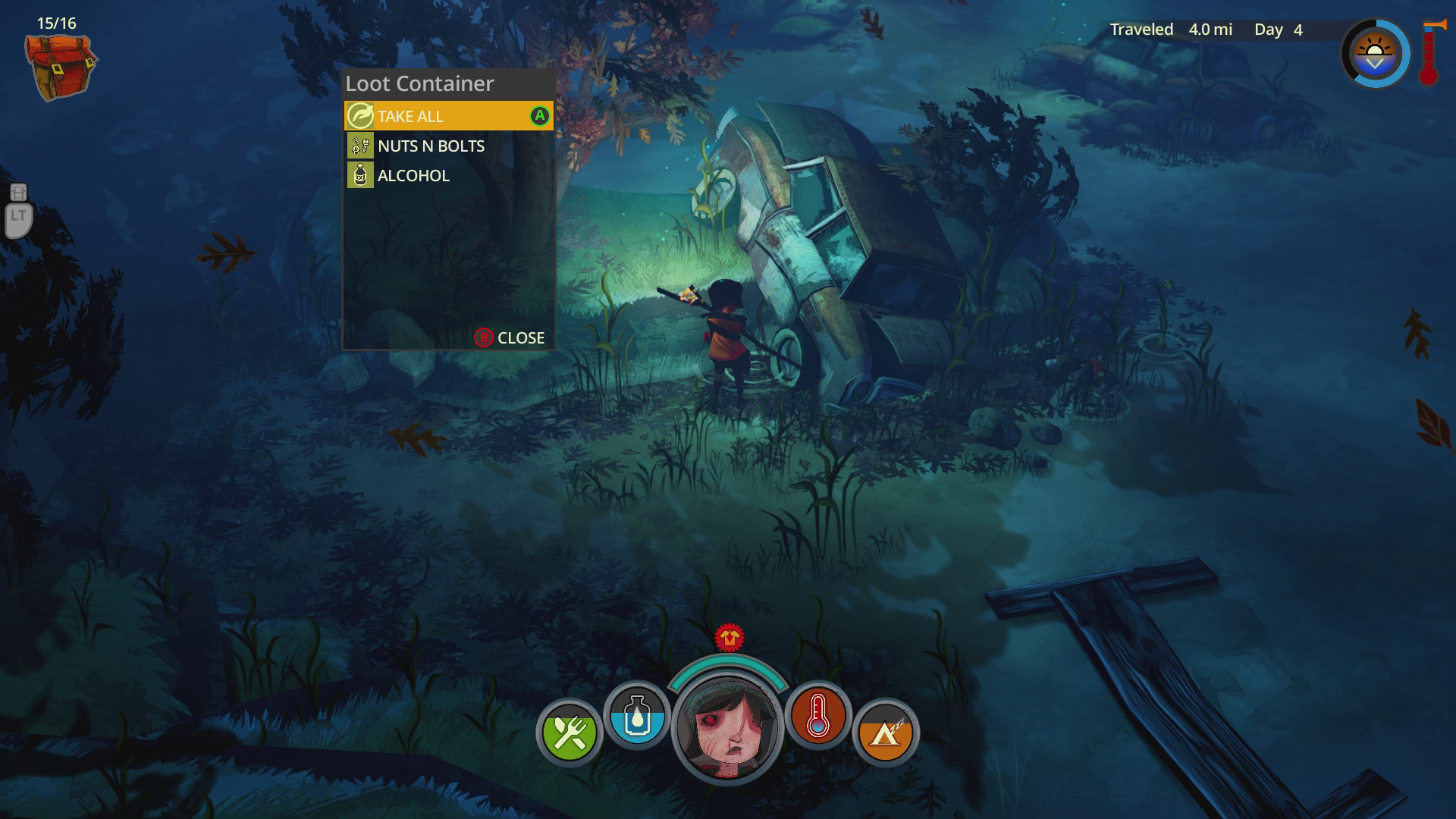
As mentioned, The Flame In The Flood takes place on a procedurally generated river with similarly generated land locations. As you travel, you'll happen upon various types of locations that Scout can dock with. Rafting can be just as dangerous to Scout's health as the game's savage beasts. To some degree, you're at the mercy of the currents, which are visually represented on the river as flowing lines. You can paddle hard in another direction, but you'll always be limited by Scout's stamina and the river's eternal march to sea. This can create desperate situations, as you become torn between two different locations — both likely to contain items you crucially need — forcing you to make painful, sometimes deadly decisions. It's those life or death situations that form the meat of the game's drama.
The Flame In The Flood has a fixed camera, usually high above Scout and Aesop in an isometric fashion. As such, you'll find yourself relying on Aesop's barks and growls to alert you to dangers scattered throughout the game's abandoned locations. In some of the areas, you can find loot, shelter and food, and those locations include churches, abandoned stores, untamed wilds and more. If you're to survive, you'll have to brave them all.
Stepping in to one of the game's procedurally generated areas can be a harrowing experience. There are limited combat mechanics, and there are dozens of ways to die. The game even offers an achievement for succumbing to every deadly mechanic too. If you fail to stay warm, creating camp fires and keeping dry — Scout can die of hypothermia. If you don't eat, starvation; if you don't drink, death by thirst — and if you resort to drinking unfiltered water, you can fall afoul of an infection. Those are some of the more mundane ways The Flame In The Flood will try to kill you. It's far less pleasant to be eaten by wolves, mauled by a bear or to drown in the river, and slowly bleeding out while you desperately scavenge for the correct materials to create bandages can be utterly excruciating.
Slowly bleeding out while you desperately scavenge for the correct materials to create bandages can be utterly excruciating.
The Flame In The Flood might be thin on narrative, but it creates tension and drama in other ways. You're able to lure creatures into dangerous crafted traps, kill them with poisoned bait and make use of an expensive bow with arrows, but it's often smarter to flee. Those deus ex machina moments in other games that swoop in and rescue you during scripted cut-scenes can occur dynamically in The Flame In The Flood. It's delightful when the game's procedural features coalesce into exciting moments.
I vividly recall a desperate rush to seek out bandage materials, as I slowly bled out from a previous extrication with an angry boar. As panic settled in, I threw caution to the wind and rushed through an area quickly scavenging through boxes to try and find those life-saving items — neglecting to pay attention to the game's day and night cycle meter. As the sun set, hungry wolves begun to flood the area. My injuries prevented me from reaching maximum sprint speed, allowing the wolf pack to surround me.
Some of The Flame In The Flood's creatures behave with uncanny realism — when you face the wolves, they pause, and cautiously encircle you. A swing of your staff will cause them to flinch, giving you an opening to flee. In chase, one wolf will attempt to get in front of you to cut off your escape, while the others try to sink their teeth into your back. I felt certain my desperate and injured Scout would be unable to escape, but in my wild flight, I happened upon a bear cave.
Typically, I'd expect enemy creatures to automatically fixate on the playable character and pummel them until they were a bloody pixelated smear — such was not the case with this bear. Perceiving the wolves as a greater threat, the bear lashed out, attacking my pursuers providing me with a crucial and dramatic opening to flee to the relative safety of the river.
As you get to grips with the different ways creatures can interact, what materials you need and where to find them, you'll ascend from cautious vagrant to seasoned adventurer. The sense of progression is incredibly rewarding.
As you get further downriver, you'll face more powerful beasts and challenges, and you'll have the traps, equipment and clothing to meet those difficulties head on. Even in death, The Flame In The Flood gives you a map of the river length you traversed, the locations you visited, the ailments you suffered and the encounters you overcame. Taking revenge on the boar that shattered my bones felt so good.
Source to sea
Conclusion
The Flame In The Flood is an example of what a comparatively small team without triple A funds can achieve with good project management and a whole heap of passion. The Flame In The Flood is compelling, beautiful, concise and above all cohesive, with its systems, mechanics and atmospherics all working together to build something outstanding.
Pros:
- Challenging and rewarding
- Stunning visuals and atmosphere
- Awesome sound track
- Great value
Cons:
- Narrative could've been meatier
- Inventory management could be improved
The Flame In The Flood punches far above its humble Kickstarter origins, bringing accessibility with its checkpointed story campaign and an unforgiving challenge in its roguelite Endless mode. The way The Flame In The Flood's crafting system interacts with its creatures and upgrades is wonderfully purposeful, creating emergent drama without the need for scripted cut-scenes. When combined with The Flame In The Flood's incredible ambience and wonderful sound track, your journey downriver will be unforgettable — and unique to you.

Jez Corden is the Executive Editor at Windows Central, focusing primarily on all things Xbox and gaming. Jez is known for breaking exclusive news and analysis as relates to the Microsoft ecosystem while being powered by tea. Follow on Twitter (X) and tune in to the XB2 Podcast, all about, you guessed it, Xbox!
